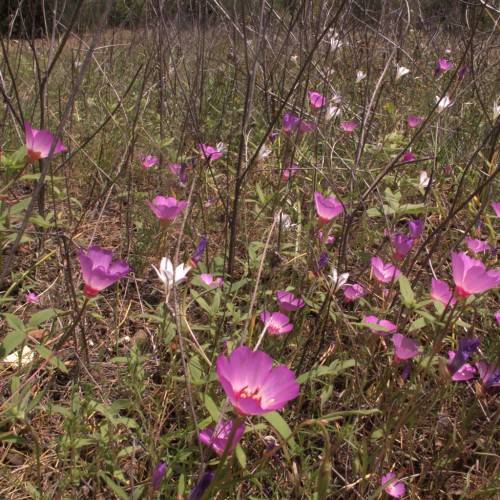
Slender Clarkia
Clarkia gracilis subsp. gracilis
Watering:
Frequent
Hardiness Zone:
Flowers:
Flowers
Sun:
full sun,part shade
Fruits:
Fruits Ready In Summer
Leaf:
Yes
Growth Rate:
Low
Drought Tolerant:
Yes
Salt Tolerant:
Yes
watering
Northwestern Clarkie should be watered thoroughly and deeply, about once every 7 to 10 days. It prefers moist soil but should never be left soggy or be overwatered. It is best to test the soil's moisture levels before each watering, and water the plant only when the soil is dry to the touch. At the height of the growing season, the plant may need to be watered more frequently. Make sure to avoid wetting the foliage to minimize the risk of fungal diseases.
sunlight
The Northwestern Clarkie, or Clarkia amoena subsp. caurina, thrives in full sun, meaning the plant needs a minimum of 6 hours of direct sunlight every day to stay healthy. Valid sunlight exposure periods depend upon the season, since hours of direct sunlight available during the day vary greatly during different times of the year. In the summer months, direct sunlight is abundant with 15+ hours of sunlight available in most parts of the United States. As colder weather approaches, the time of available direct sunlight decreases, typically being 14 hours at the beginning of autumn, 12 hours by late fall, and between 8-10 hours during the wintertime. If planted in an area with too little direct sunlight or with heavily filtered sunlight, Northwestern Clarkie plants have been known to become weak and lose their vibrant blooms after a time. Therefore, proper environmental stress relief and allowing adequate direct sunlight is important to keep the plant healthy and help it reach its full potential.
pruning
Northwestern Clarkie (Clarkia amoena subsp. caurina) is best pruned in late spring to early summer when the plant is reasonably settled and has formed buds or flowers. Prune 1-third to 1-half of the stems and branches to reduce the size of the plant and promote additional flowering or foliage. Remove any dead or diseased branches. Cut back any stems or branches that interfere with the ideal shape of the plant. Make sure to sanitize your pruners between each cut to reduce the risk of spreading plant diseases or pests.
